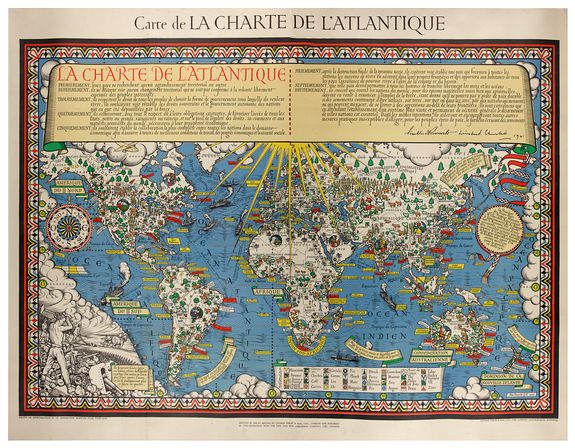Pictorial maps

Throughout the ages, pictorial maps have been used to show the cuisine of a country, the industries of a city, the attractions of a tourist town, and the history of a region, or its holy shrines.
Unlike regular maps, the emphasis is less on illustrating a particular area to scale, and more on the selection of particular landscape features in order to illustrate a place or process, and sometimes to
emphasize a specific feature.
In Medieval cartography, pictorial icons and religious and historical ideas, usually overshadowed accurate geographic proportions. A classic example of this is the T and O map, which represents the three
known continents in the form of a cross with Jerusalem at its center.
Used in the classroom, they can help students to visualize the nature of different and contrasting areas of a country or, indeed contrast different countries themselves.
Pictorial maps can be very simple, a matter of collecting images to illustrate different places, or extremely sophisticated, requiring a deep understanding of a place to be able to select the 'correct' image for the purpose of the map.
Later, during the Age of Exploration, maps became progressively more accurate for navigation needs and were often sprinkled with sketches and drawings such as sailing ships showing the direction of trade winds, little trees and mounds to represent forests and mountains and of course, plenty of sea creatures and exotic natives much of them imaginary.
Another form is the Leo Belgicus map, showing the Low Countries as a lion.
Pictorial maps may require a considerable amount of design and creativity and skills associated with finding and manipulating images from various sources. They can also form a type of
Geographical Information System or GIS.
The 20th Century
Some outstanding artists are: MacDonald Gill, Ernest Dudley Chase, Ashburton Tripp, Jo Mora, Ruth Taylor White, Lucien Boucher, Gerald Eddy, Miguel Covarrubias, Heinrich Berann, Ernest Clegg, Karl Smith, Edwin Olsen, Stanley Turner, Coulton Waugh, Everett Henry, Lindgren Brothers, Don Bloodgood, Colortext Corp, Frank Dorn, C.V. Farrow, Richard Edes Harrison, Alva Scott Garfield, Elizabeth Shurtleff, Tony Sarg, Louise Jefferson, Harrison Godwin, and Courtland Smith.